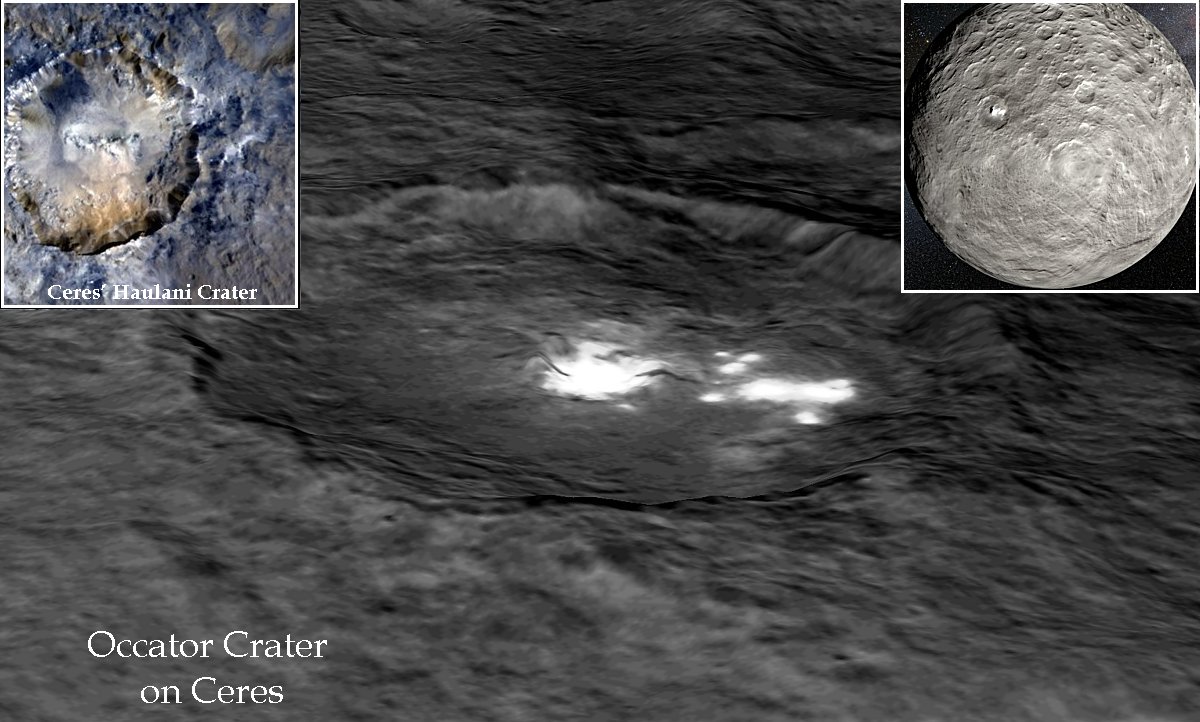Ernutet Crater And Intriguing Organics On Dwarf Planet Ceres
More than a year ago, NASA’s Dawn spacecraft presented spectacular images of bright craters on the dwarf planet Ceres.Today more Dawn spacecraft data comes from the research that focuses on Ceres and researchers from Southwest Research Institute (SwRI) try to answer some important questions:
“Was the organic material delivered to Ceres after its formation?
Or was it synthesized and/or concentrated in a specific location on Ceres via internal processes?

“The discovery of a locally high concentration of organics close to the Ernutet crater poses an interesting conundrum,” says Dr. Simone Marchi, a principal scientist at SwRI. He is discussing his team findings today at a press conference at the American Astronomical Society’s 49th Division for Planetary Sciences Meeting in Provo.
Ceres is believed to have originated about 4.5 billion years ago at the dawn of our solar system. Studying its organics can help explain the origin, evolution, and distribution of organic species across the solar system.
The very location of Ceres at the boundary between the inner and outer solar system and its intriguing composition characterized by clays, sodium- and ammonium-carbonates, suggest a very complex chemical evolution. The role of organics in this evolution is not fully understood, but has important astrobiological implications.0
Earlier research that focused on the geology of the organic-rich region on Ceres were inconclusive about their origin,” Marchi said. “Recently, we more fully investigated the viability of organics arriving via an asteroid or comet impact.”
Scientists explored a range of impact parameters, such as impactor sizes and velocities, using iSALE shock physics code simulations. These models indicated that comet-like projectiles with relatively high impact velocities would lose almost all of their organics due to shock compression.
Impacting asteroids, with lower incident velocities, can retain between 20 and 30 percent of their pre-impact organic material during delivery, especially for small impactors at oblique impact angles. However, the localized spatial distribution of organics on Ceres seems difficult to reconcile with delivery from small main belt asteroids.
“These findings indicate that the organics are likely to be native to Ceres,” Marchi said.



 Creators of mankind
Creators of mankind Description of “Tall white aliens”
Description of “Tall white aliens” Where they came from?
Where they came from? About hostile civilizations
About hostile civilizations The war for the Earth
The war for the Earth “Tall white aliens” about eternal life
“Tall white aliens” about eternal life Video: “Nordic aliens”
Video: “Nordic aliens” Aliens
Aliens Alien encounters
Alien encounters The aliens base
The aliens base UFO
UFO Technology UFO
Technology UFO Underground civilization
Underground civilization Ancient alien artifacts
Ancient alien artifacts Military and UFO
Military and UFO Mysteries and hypotheses
Mysteries and hypotheses Scientific facts
Scientific facts


















